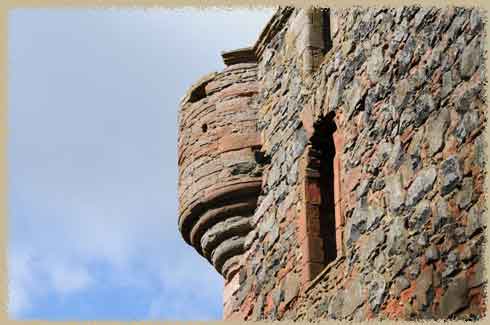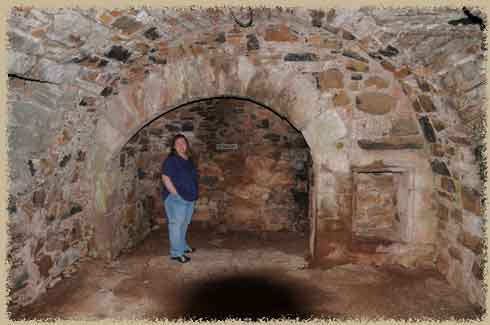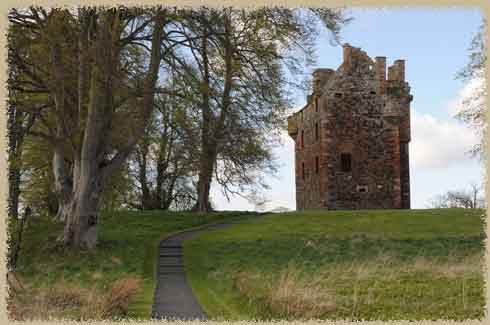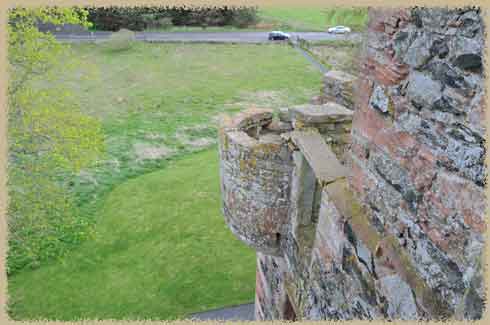Greenowe Tower
Greenowe tower is another repeat for us -- I loved the small, neat tower on the hill -- and this time we ran itno the most charming couple from Northumberland, who set us off on our path for ht enext few days, down to see Hadrian's Wall, the roman remains on the frontier. Score!

one of the remaining corner bartizans at Greenowe
16th century tower
Like most of the towers in the 16th century, this is a house, not a fortification. While it has obvious defensive details (shotholes and lookouts) it is primarily a residence.
The tower is a four storey 16th century l-plan tower house (a lintel is dated 1581), with a small turreted stair tower in the angle. There are round bartizans (now unreachable) on three corrners. There is still an iron gate on the main entrance, leading ot the vaulted basement and the hall on the first floor. A corbelled out spiral stair in the angle of the tower leads to the upper floors, now mostly ruined, but you can get a nice view down nto the interior of the tower.
There is a string course on the angle and stair tower.The main block measures 10.5m x 7.1m, and the wing projects 4.5m x 3.3m. The main block has four chambers, and a small entry chamber squeezed in under the stair turret. The main hall on the first floor is large and has four windows (the current windows are much larger than the originals, of course) and a decorated fireplace on the east wall
There is a blocked doorway in the north wall and north staircase, which would have granted access to the now-ruined 17th century block of the castle.
The basement contains the kitchen and storage cellars (complete with metal meat hooks in the ceiling), with a fireplace in the north wall and a salt-cupboard next to it -- valuable salt was often stored in a small niche near the firpelace to keep it dry, something quite important in the damp climate of Scotland!

the kitchen fireplace in the cellar, with a salt-box cupboard
There are some traces of other outbuildings on the site, and long-vanished gardens would have graced the western side of the castle.
Ownership
The Setons built the castle, after acquiring the lands from the Gordons via marriage in the 16th century. The Pringles bought the castle in the 17th century, and then to the Dalyrymples.
It was occupied by the Fairholmes until the middle of the 19th century, and passed to state care in 1937.

the tower is in a mature stand of trees, on a small hill

one of the ruined bartizans, from the upper floor of the tower

